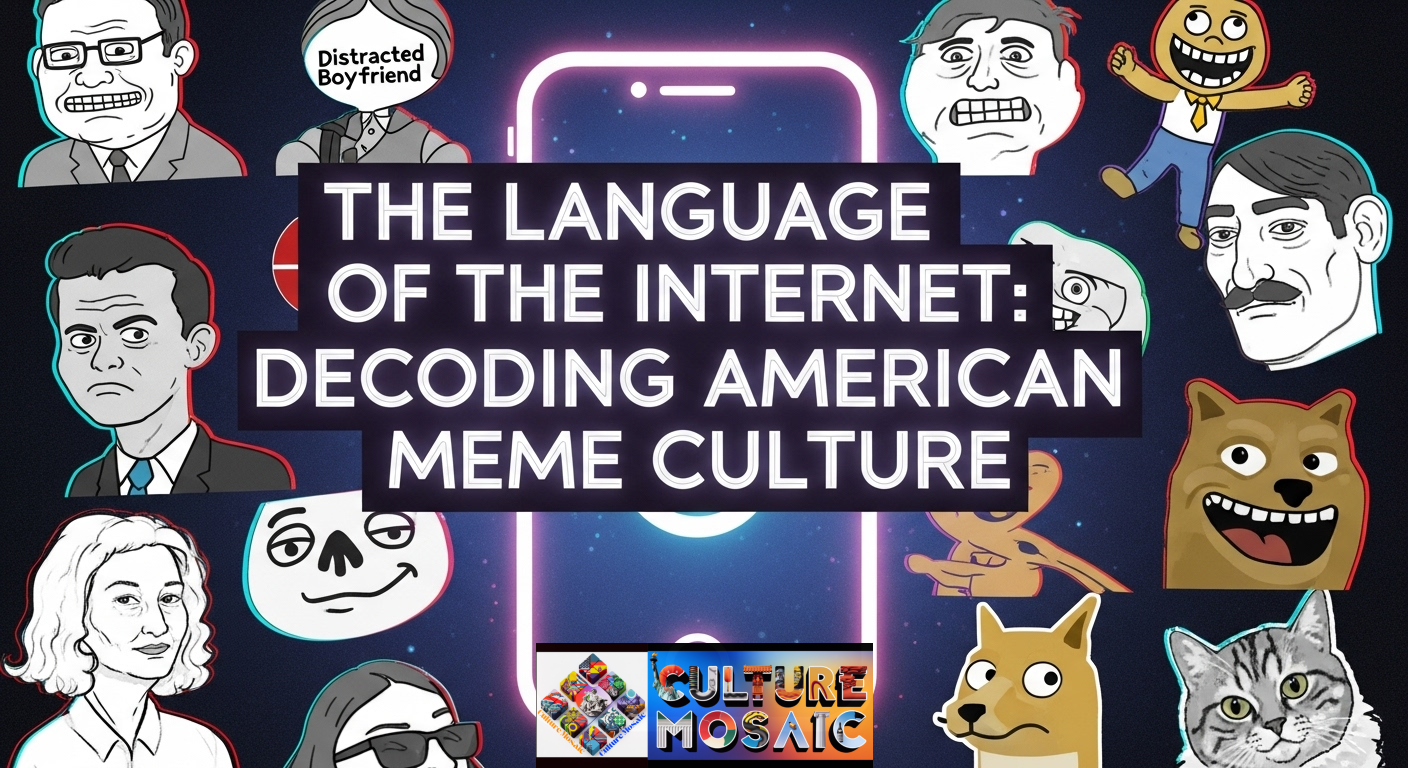The last time you scrolled through your feed and understood a meme without immediate clarification. That quick recognition? You have demonstrated flow in one of the most complex communication systems of our time. Welcome to the language of the Internet, where a single image can express layers of meaning that will take paragraphs to explain in traditional text.
Memes are no longer funny photos with captions. They are folk songs of the digital age – a sophisticated form of communication that requires understanding of cultural literacy, historical reference, and fine irony. If you have ever tried to explain why there is something funny for someone outside your online circles, then you have experienced how complicated this language has become.
Understanding the Language of the Internet Through Meme Evolution
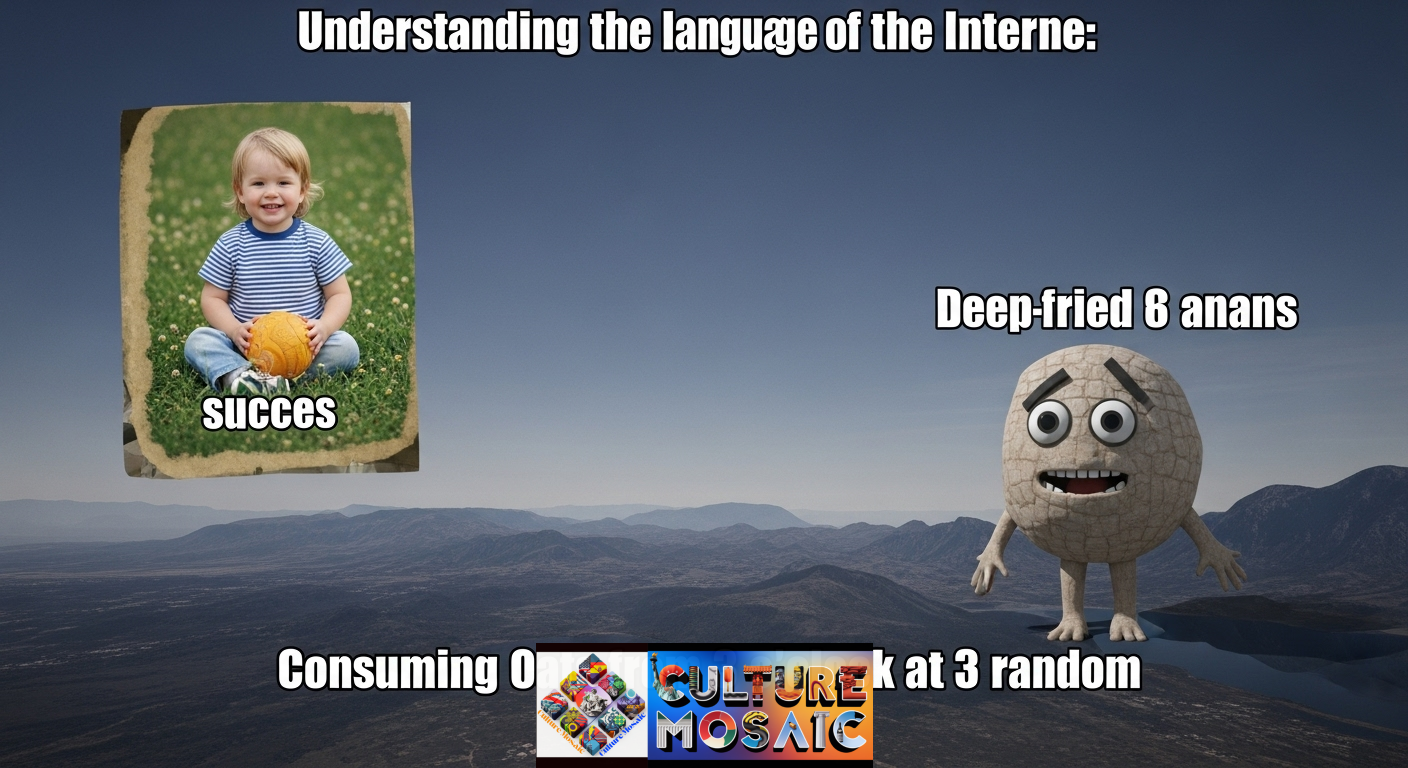
Visual vocabulary of the Internet has undergone a remarkable change. What simple image began as macrose – affects the font on a child’s picture of a success – has developed into a more complex one. Today’s lamps often have several layers of irony, callbacks for previous meme formats, and visual distortions that can find the newcomers baffling.
For example, take “deep-fried” memes. These deliberately declined images, oversized and crisp with compression artifacts, emerged as a parody of low-quality meme production. But they quickly became their own art form, indicating a specific type of absurd humor. For anyone unfamiliar with this development, they look like technical mistakes. To start, they are deliberate aesthetic options that communicate with tones and intentions.
The actual lames carry it even further, making the dreamer landscapes that do not make a logical understanding. A picture of a poorly presented 3D model with a lesson about “Consuming Oats from 3 o’clock at 3 o’clock is random – it exploits a shared praise for absurdity and often in a shared praise for the comfort of fuck in the heavy world. This is the language of the Internet on its most poetic: Finding the community through shared confusion.
How Platforms Shape the Language of the Internet
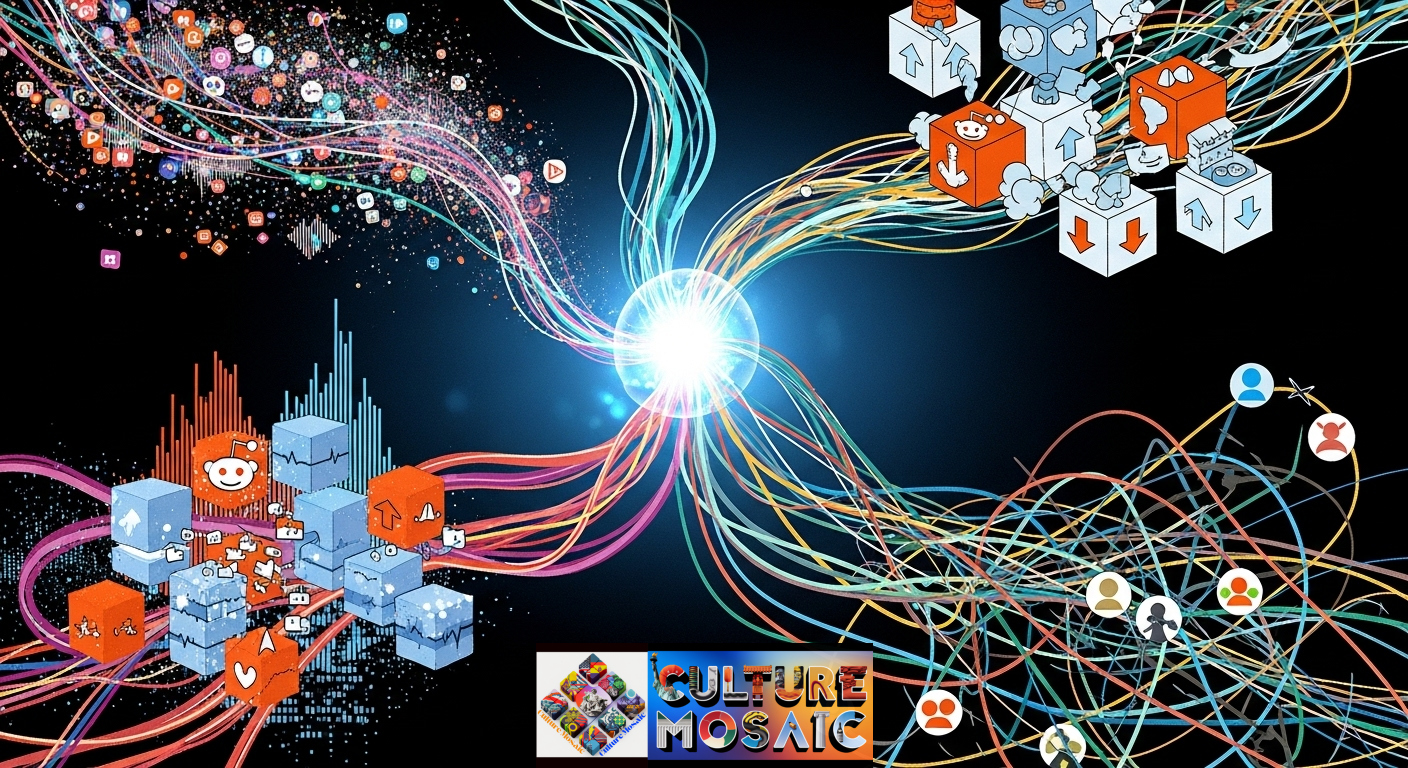
Each social media platform has developed its own dialect within the broader language of the internet. TikTok’s short-form video format has created a culture of sounds, trends, and visual jokes that cycle at breakneck speed. A trend can emerge, peak, become ironic, and die within days. Understanding TikTok’s language means recognizing which sounds are currently “valid” to use and which have crossed into cringe territory.
Reddit operates differently, with subreddit-specific in-jokes and strict unwritten rules about what content belongs where. The platform’s upvote/downvote system acts as a cultural enforcement mechanism, teaching users the boundaries of acceptable humor and expression within each community. Break these rules, and you’ll quickly learn them through downvotes and corrective comments.
X (formerly Twitter) has perhaps the most complex ecosystem, where context collapse—when multiple audiences with different expectations witness the same content—creates constant tension. A joke that lands perfectly within one subculture can spark outrage in another. Navigating X requires reading not just the words, but understanding the poster’s follower base, their previous tweets, and the ongoing conversations in their replies.
These platform-specific differences mean true fluency in the language of the internet requires code-switching between digital spaces, much like adapting your communication style between professional emails and texts with close friends.
The Language of the Internet as Political Commentary
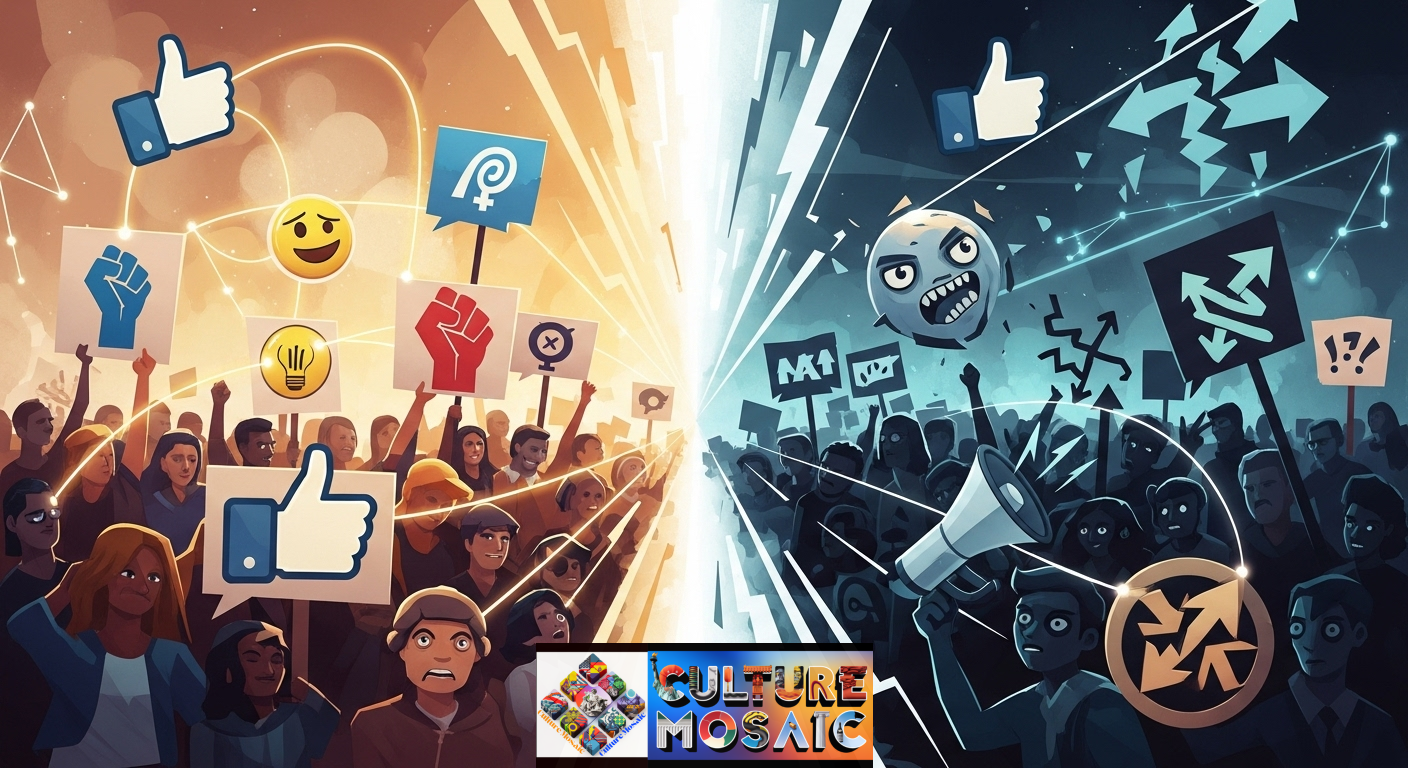
Perhaps nowhere is the sophistication of internet language more apparent than in political memes. What might look like a simple joke often carries sophisticated social commentary, historical references, and critiques of power structures. Memes have become tools for grassroots organizing, protest, and counter-narrative to mainstream media coverage.
During significant political moments, meme creators work at lightning speed to contextualize events, express collective frustration, or galvanize action. The women’s marches, climate protests, and social justice movements of recent years have all been accompanied by waves of memes that helped participants feel connected to something larger than themselves.
But political memes also demonstrate how the language of the internet can be weaponized. Misinformation spreads through meme format precisely because it bypasses our critical thinking defenses. A claim presented as a meme feels less like propaganda and more like peer communication, making it more likely to be shared without verification.
Understanding this dual nature is crucial for anyone participating in online discourse. The same tools that build community and facilitate protest can also spread division and falsehoods. Digital literacy now means not just understanding what memes say, but critically examining what they’re doing.
Meme Literacy and the Shared Digital Experience
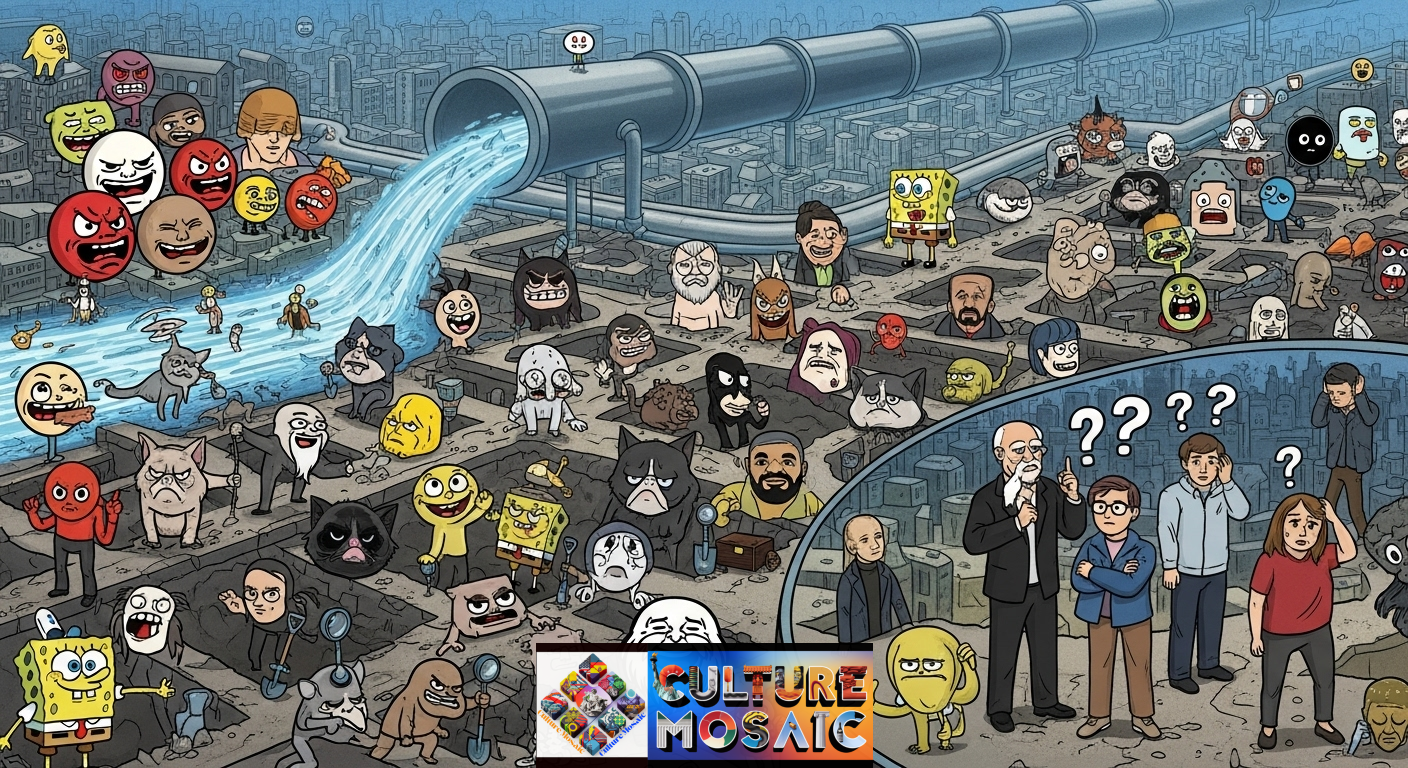
What makes someone fluent in the language of the internet? It’s not just about knowing current memes—it’s about understanding the grammar underlying them. This includes recognizing common formats, understanding how irony operates online, and having the cultural context to catch references.
Consider how often memes reference earlier memes, creating a self-referential web of meaning. A 2024 meme might call back to something from 2016, which itself referenced a 2012 format. Without that archaeological knowledge, you’re missing layers of the joke. This creates a fascinating dynamic where longtime internet users have a significantly different experience than newcomers, despite looking at the same content.
There’s also an element of timing. A meme shared too early in its lifecycle might confuse people; shared too late, it signals you’re out of touch. This temporal sensitivity makes the language of the internet uniquely challenging and constantly evolving. Unlike traditional languages that change over generations, internet language transforms in months or even weeks.
Why the Language of the Internet Matters
Dismissing memes as frivolous overlooks their genuine cultural significance. They’re how millions of people process news, express political views, build community, and make sense of an increasingly complex world. Understanding this language is no longer optional for anyone working in media, marketing, education, or politics.
More fundamentally, meme culture represents a democratization of cultural production. You don’t need a publishing deal or a production studio to create something that resonates with millions. This accessibility has given voice to communities and perspectives traditionally excluded from mainstream media, though it’s also enabled the spread of harmful content at an unprecedented scale.
The language of the internet, with all its complexity and contradiction, is simply how we communicate now. It’s where relationships form, where social movements organize, and where a significant portion of human culture is created and shared. Understanding it means understanding the world we’re living in.
As platforms continue to evolve and new technologies emerge, this language will keep adapting. The specifics will change—today’s trending format will be tomorrow’s dated reference—but the underlying human need to connect, express, and make meaning together will remain. And that’s what makes studying the language of the internet not just intellectually interesting, but genuinely important.
FAQs About the Language of the Internet
Why is the language of the internet so hard to explain to people offline?
Internet language relies heavily on shared context, rapid evolution, and visual literacy that’s built up over time through immersion. When you try to explain a meme to someone unfamiliar with the format, references, and cultural moment it emerged from, you’re essentially translating between two different languages. What feels intuitive to someone who’s chronically online requires an extensive backstory for someone who isn’t, which often kills the humor in the process. It’s similar to explaining why a word in another language is funny—the translation loses the essence.
How do new internet slang terms and memes spread so quickly?
The rapid spread of internet language is driven by platform algorithms that reward engagement, the human desire for in-group belonging, and the ease of sharing digital content. When a new term or format emerges, early adopters gain social capital by being “in the know,” incentivizing quick adoption. TikTok’s “For You Page” and X’s trending topics accelerate this process by surfacing popular content to millions simultaneously. Additionally, the fear of missing out (FOMO) drives people to stay current with internet culture, creating a self-perpetuating cycle of rapid linguistic evolution.
Are memes a legitimate form of communication or just entertainment?
Memes are absolutely legitimate communication tools that serve multiple functions beyond entertainment. They convey complex ideas efficiently, build community through shared understanding, facilitate political discourse, and help people process difficult emotions or events. Linguists and anthropologists increasingly study memes as a form of modern folklore and cultural transmission. While they’re often humorous, this doesn’t diminish their communicative value—humor has always been a sophisticated way humans share information and social commentary. The language of the internet, through memes, is as valid as any other form of cultural expression.
Why do some memes become dated or “cringe” so quickly?
The lifecycle of internet content is compressed because digital platforms create constant demand for novelty. A meme becomes “cringe” when it crosses from insider knowledge to mainstream awareness, particularly when it’s adopted by brands, older generations, or people perceived as out of touch. This is partly about gatekeeping—the internet’s culture thrives on feeling exclusive and current. Once something becomes too widely understood, it loses its value as a marker of cultural literacy. Additionally, overuse leads to saturation, and the irony that makes internet humor work becomes stale through repetition.
How can someone improve their fluency in the language of the internet?
Building fluency in internet language requires active immersion rather than passive observation. Spend time on various platforms to understand their different dialects and norms. Follow accounts that track internet culture and meme evolution. Don’t just consume content—pay attention to comment sections where users often explain or debate meanings. Crucially, accept that you’ll sometimes feel lost, and that’s part of the learning process. Resist the urge to use new terms or memes until you genuinely understand their context and appropriate usage. Most importantly, approach internet culture with curiosity rather than judgment, recognizing it as the complex communication system it truly is.

